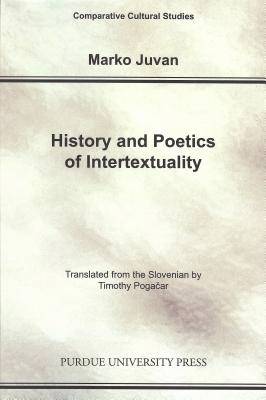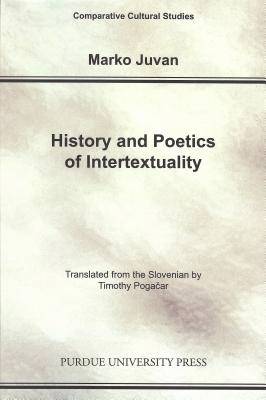
- Afhalen na 1 uur in een winkel met voorraad
- Gratis thuislevering in België vanaf € 30
- Ruim aanbod met 7 miljoen producten
- Afhalen na 1 uur in een winkel met voorraad
- Gratis thuislevering in België vanaf € 30
- Ruim aanbod met 7 miljoen producten
Zoeken
€ 53,45
+ 106 punten
Omschrijving
Marko Juvan's History and Poetics of Intertextuality is a revised and updated translation of his 2000 book Intertekstualnost (Intertextuality). In his book, Juvan argues that while intertextuality is constitutive of all textuality it may be grounded in certain literary works, genres, or styles (e.g., parody or allusion as forms of citationality). He surveys the field in order to ground the poetics of intertextuality in the history of its idea from Kristeva to New Historicism and citationality from Genette's late structuralism to text theory. In humanities scholarship literary studies have transformed the notion of intertextuality from its transgressive content into a detailed descriptive methodology. However, by bringing citationality into focus, they also stressed that literature is an autopoetic system, living on cultural memory, and interacting with other social discourses. The poetics of intertextuality proposed here, based mainly on semiotics, elucidates factors determining the socio-historically elusive border between general intertextuality and citationality (encyclopaedic literary competence, paratext, etc.) and explores modes of intertextual representation, stressing that pre-texts evoked or re-written in post-texts figure as interpretants of the latter and vice versa. Intertextual derivations and references, which have become common in literary culture, are finally explained as intertextual figures and genres.
Specificaties
Betrokkenen
- Auteur(s):
- Uitgeverij:
Inhoud
- Aantal bladzijden:
- 216
- Taal:
- Engels
- Reeks:
Eigenschappen
- Productcode (EAN):
- 9781557535030
- Verschijningsdatum:
- 15/01/2009
- Uitvoering:
- Paperback
- Formaat:
- Trade paperback (VS)
- Afmetingen:
- 150 mm x 229 mm
- Gewicht:
- 376 g

Alleen bij Standaard Boekhandel
+ 106 punten op je klantenkaart van Standaard Boekhandel
Beoordelingen
We publiceren alleen reviews die voldoen aan de voorwaarden voor reviews. Bekijk onze voorwaarden voor reviews.











